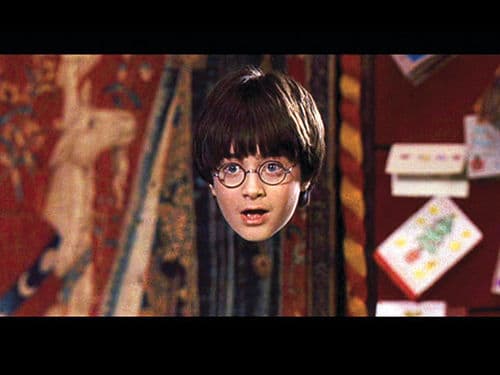Harry Potter Like Invisibility Cloak Is Now Battery Powered - The University of Texas Research
When science-fiction gets real, we get goosebumps, but when objects out of a fantasy world come true, eyes are going to pop out. Yep, it's been materialized. Researchers at The University of Texas at Austin have proposed the first design of a Harry Potter like invisibility cloak using an external source of energy, in this case, a battery, to significantly broaden its bandwidth of operation. Working on the project are - Andrea Alù, associate professor in the Department of Electrical and Computer Engineering at the Cockrell School of Engineering, and his team have proposed a design for an active cloak that allows objects to become undetectable to radio sensors over a greater range of frequencies.
Till date, by far the cloaks of invisibility have been developed using metamaterials (advanced artificial materials) or metasurfaces (flexible, ultrathin metamaterials) that can suppress the scattering of light that bounces off an object, making an object less visible. We have covered #-Link-Snipped-# in the past here on CrazyEngineers. A paper shows that all available cloaking techniques based on passive cloaks are constrained by Foster’s theorem, which limits their overall ability to cancel the scattering across a broad frequency spectrum. “Many cloaking designs are good at suppressing the visibility under certain conditions, but they are inherently limited to work for specific colors of light or specific frequencies of operation,†Alù said. In this paper, on the contrary, “we prove that cloaks can become broadband, pushing this technology far beyond current limits of passive cloaks. I believe that our design helps us understand the fundamental challenges of suppressing the scattering of various objects at multiple wavelengths and shows a realistic path to overcome them.â€

The proposed active cloak uses a battery, circuits and amplifiers to boost signals, which makes possible the reduction of scattering over a greater range of frequencies. This design, which covers a very broad frequency range, will provide the most broadband and robust performance of a cloak to date. Additionally, the proposed active technology can be thinner and less conspicuous than conventional cloaks. The proposed active cloak will have a number of applications beyond camouflaging, such as improving cellular and radio communications, and biomedical sensing. “In our case, by introducing these suitable amplifiers along the cloaking surface, we can break the fundamental limits of passive cloaks and realize a ‘non-Foster’ surface reactance that decreases, rather than increases, with frequency, significantly broadening the bandwidth of operation,†Alù said.
The Air Force Office of Scientific Research, the Defense Threat Reduction Agency and a National Science Foundation CAREER Grant provided support for this research. The team’s paper, “Broadening the Cloaking Bandwidth with Non-Foster Metasurfaces,†was published Dec. 3 in Physical Review Letters. Alù, researcher Pai-Yen Chen and postdoctoral research fellow Christos Argyropoulos co-authored the paper. Both Chen and Argyropoulos were at UT Austin at the time this research was conducted.
Till date, by far the cloaks of invisibility have been developed using metamaterials (advanced artificial materials) or metasurfaces (flexible, ultrathin metamaterials) that can suppress the scattering of light that bounces off an object, making an object less visible. We have covered #-Link-Snipped-# in the past here on CrazyEngineers. A paper shows that all available cloaking techniques based on passive cloaks are constrained by Foster’s theorem, which limits their overall ability to cancel the scattering across a broad frequency spectrum. “Many cloaking designs are good at suppressing the visibility under certain conditions, but they are inherently limited to work for specific colors of light or specific frequencies of operation,†Alù said. In this paper, on the contrary, “we prove that cloaks can become broadband, pushing this technology far beyond current limits of passive cloaks. I believe that our design helps us understand the fundamental challenges of suppressing the scattering of various objects at multiple wavelengths and shows a realistic path to overcome them.â€

The proposed active cloak uses a battery, circuits and amplifiers to boost signals, which makes possible the reduction of scattering over a greater range of frequencies. This design, which covers a very broad frequency range, will provide the most broadband and robust performance of a cloak to date. Additionally, the proposed active technology can be thinner and less conspicuous than conventional cloaks. The proposed active cloak will have a number of applications beyond camouflaging, such as improving cellular and radio communications, and biomedical sensing. “In our case, by introducing these suitable amplifiers along the cloaking surface, we can break the fundamental limits of passive cloaks and realize a ‘non-Foster’ surface reactance that decreases, rather than increases, with frequency, significantly broadening the bandwidth of operation,†Alù said.
The Air Force Office of Scientific Research, the Defense Threat Reduction Agency and a National Science Foundation CAREER Grant provided support for this research. The team’s paper, “Broadening the Cloaking Bandwidth with Non-Foster Metasurfaces,†was published Dec. 3 in Physical Review Letters. Alù, researcher Pai-Yen Chen and postdoctoral research fellow Christos Argyropoulos co-authored the paper. Both Chen and Argyropoulos were at UT Austin at the time this research was conducted.
0
